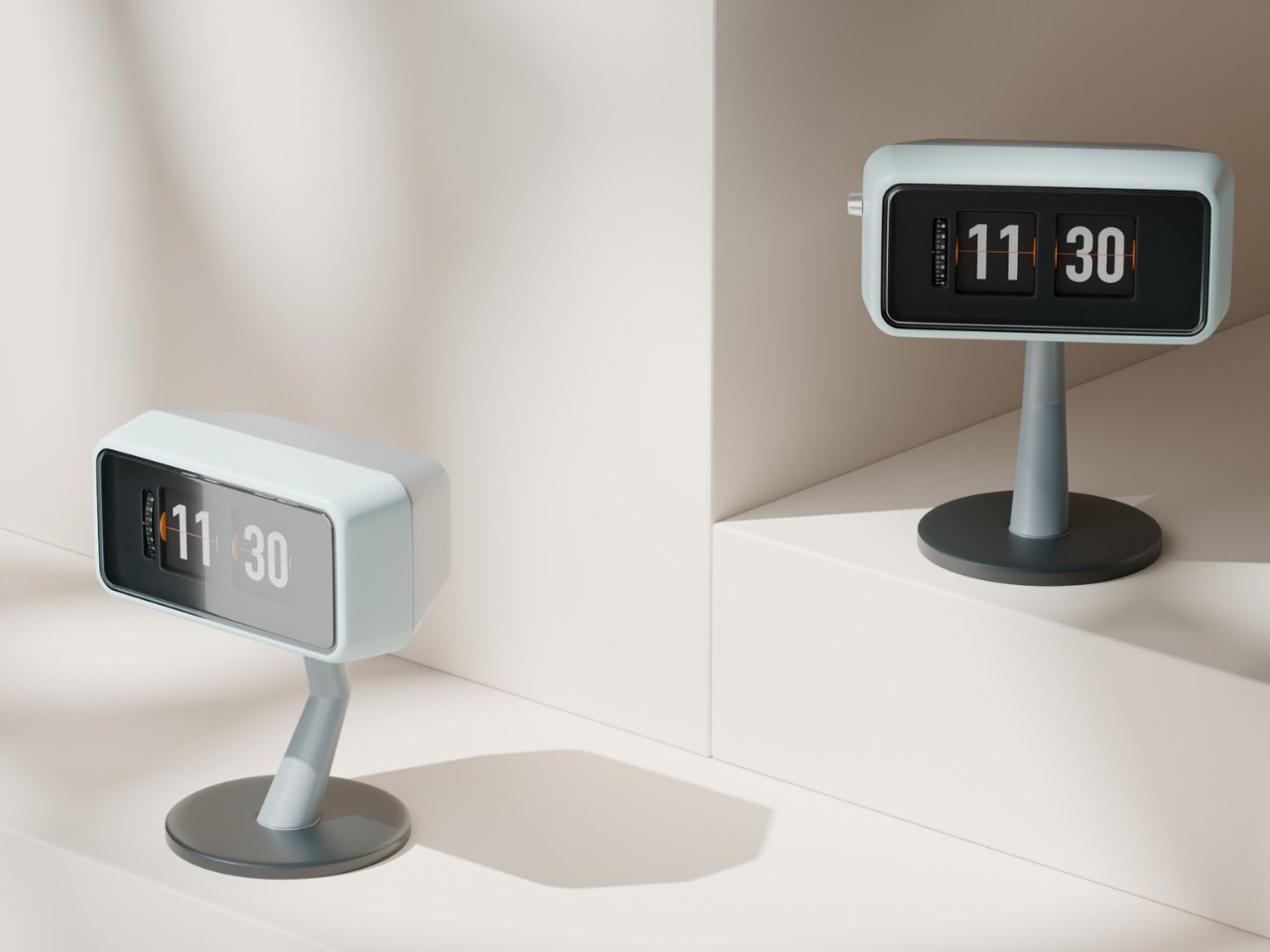The classic Hitachi DW221 flip clock, a staple of 1970s office desks, is enjoying a fresh reinterpretation as a design concept. Its mechanical flip mechanism, bright orange digits and simple rectangular case have become icons of mid‑century style. A recent portfolio piece presents a minimalist version of this vintage timepiece, using pastel tones and clean lines to fit today’s streamlined workspaces.
The original DW221 was celebrated for its reliable flip mechanism and bold visual presence. Built in Japan in the mid‑1970s, it featured a sturdy plastic housing, a split‑flap display that turned each minute, and a distinctive orange‑white color scheme that made the changing numbers easy to read from a distance . Its design was both functional and playful, a hallmark of the era’s consumer electronics. Over the decades, the DW221 has become a collector’s item, symbolizing a time when analog motion added character to everyday gadgets.
Designer: Aleksander Shepelev
The project, titled “Minimalist Flip Clock: A Modern Take on Hitachi DW221,” emphasizes realistic lighting, texture detail and composition to highlight the clock’s sleek new look . The retro color punch is replaced by soft pastel panels, and the case adopts smooth, rounded edges that echo contemporary desk accessories. The designer simulated realistic shadows and subtle reflections, giving the clock a tactile, almost photographic quality. By focusing on lighting that mimics natural office illumination, the render conveys how the clock would look on a real desktop, inviting viewers to imagine it as a functional piece rather than just a visual study.
Because it is a concept, no physical prototype has been produced. The project serves primarily to explore how classic mechanisms can be integrated into today’s design language. The flip cards still rotate in the same clockwise cascade, preserving the satisfying “tick‑tock” rhythm that made the DW221 a favorite. This blend of nostalgia and modern minimalism aligns with a broader market trend: consumers are increasingly drawn to retro‑inspired ideas that offer a touch of history without cluttering their environment. The minimalist flip clock concept taps into this desire, offering a conversation‑starter that could become a subtle time‑telling tool if ever realized.
The resurgence of flip‑clock ideas reflects a larger cultural shift toward tactile, analog experiences in a digital age. While smartphones dominate timekeeping, physical clocks provide a visual and auditory cue that can reduce screen fatigue. Even as a concept, the minimalist flip clock offers a quiet reminder of time’s passage without the glare of LEDs or the distraction of smart features.
The post Minimalist flip clock concept brings retro charm for modern desks first appeared on Yanko Design.

